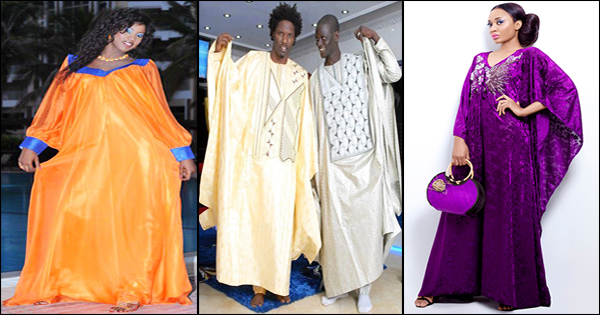
The Senegalese fascination with boubou the long, colorful, loose-fitting garment – worn by both sexes in parts of Africa is well-founded. After all, the word “boubou” comes from the Wolof mbubbe Wolof being the principal African language of Senegal. It underlines the Senegalese assertion that the cloth has always been Senegalese. The boubou is fit for purpose thanks to its multiplicity of contradictory uses and meanings. It can connote sexiness or modesty. It is the outfit young women wear for weddings, baby-naming ceremonies, and Muslim feast days. While it’s worn by sensuous ladies conveying the mystique of independence and wealth, it is also the obligatory dress of respectable Muslim matrons. For Muslim men, wearing an embroidered damask boubou is a classy move yet it’s also the dress required for praying at the mosque. The fabric for embroidered boubous is the cotton damask, called basin in francophone West African countries. The fabric is often bought in white cloth and then hand-dyed in rich hues by women dyers working out of their homes. The damask from Europe is the most expensive while cheaper options come from Asia or Nigeria. After the fabric is dyed, the tailor creates the embroidery design with a small sewing machine, coming in either white or beige color. As the years wore on, colored embroidery became a thing. For less elegant occasions, women have boubous made of Holland wax print or of imitation wax print called légos. The Senegalese complete set comprises a three-piece suit where a tunic, trousers, and a boubou will go on top of the suit. A complete traditional Senegalese suit will need from 9 to 12 meters of fabric. The oddity with Boubous is that the material used comes from Europe and Asia. The Bazin term has Italian origins Bamagia which mean cotton batting. The first grade Bazin comes with 100% cotton and once dyed, gives an exceptional brightness. The second grade Bazin from China costs half the price of the first one. Then there is the inferior Bazin, also from China sold four times less. Aside from Bazin, Wax Boubou also has a strong presence in Africa having English roots inspired by the Javanese batik, as Dutch and English settlers printed patterns on cotton fabrics.